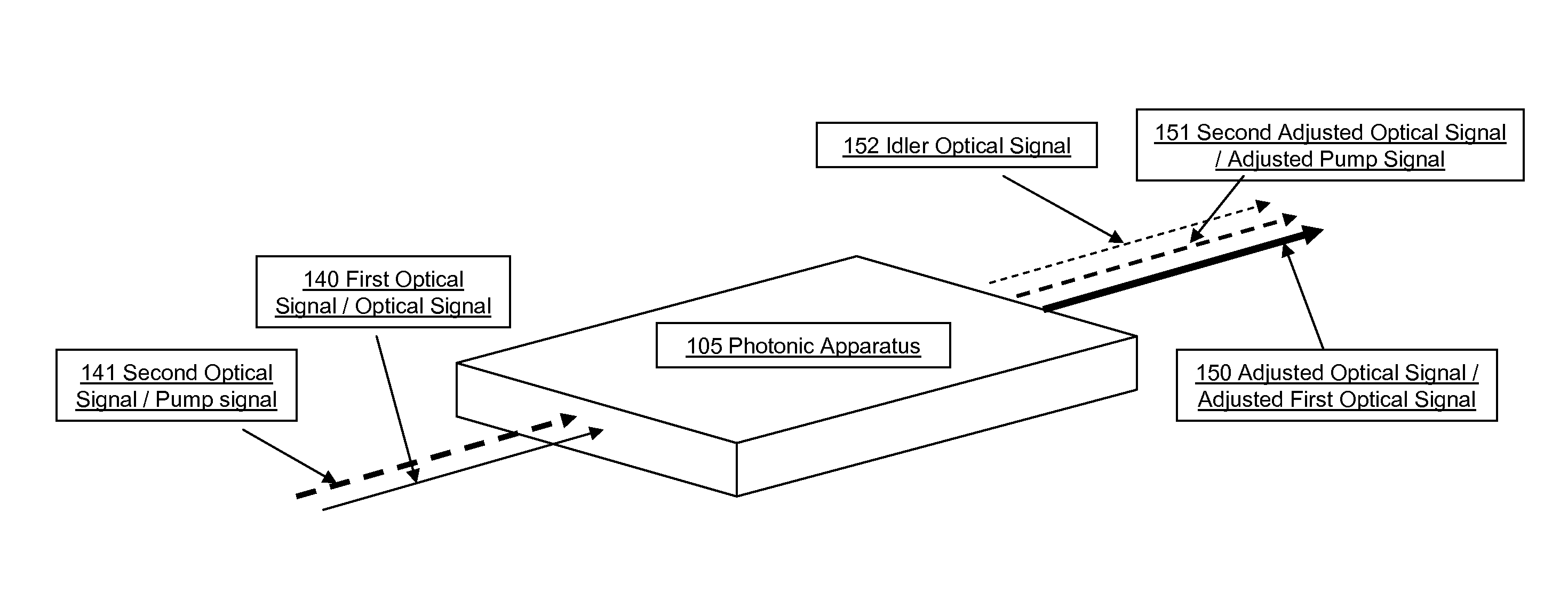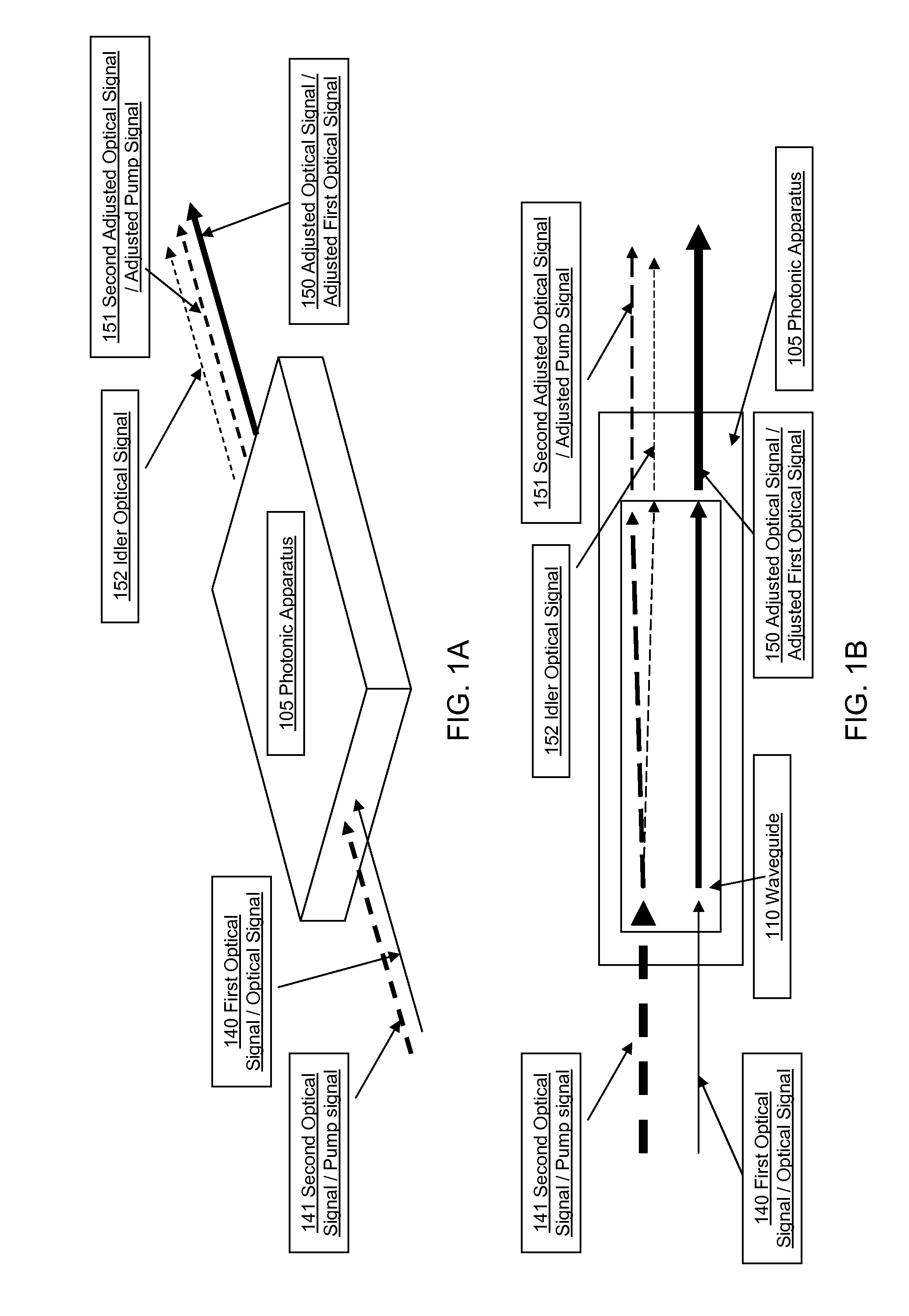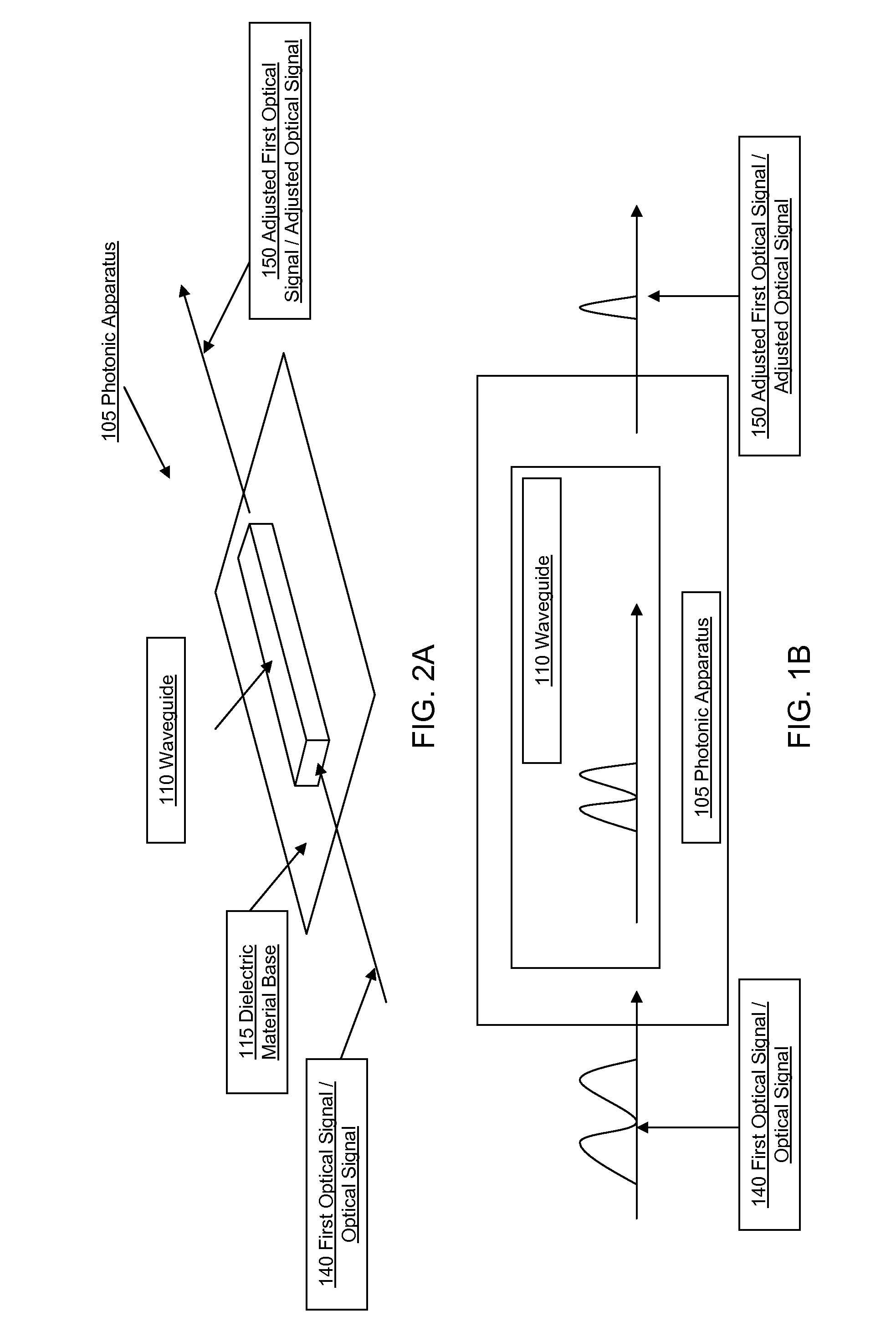Silicon integrated photonic optical parametric amplifier oscillator and wavelength converter
- Summary
- Abstract
- Description
- Claims
- Application Information
AI Technical Summary
Benefits of technology
Problems solved by technology
Method used
Image
Examples
Embodiment Construction
[0029]For purposes of reading the description of the various embodiments of the present invention below, the following descriptions of the sections of the specification and their respective contents may be helpful:[0030]Section A describes the environment and the system components for practicing embodiments of the present invention;[0031]Section B describes embodiments for methods for phase adjustment;[0032]Section C describes embodiments for methods of optical signal intensity or power adjustment by the photonic apparatus; and[0033]Section D describes embodiments for methods of wavelength adjustment by the photonic apparatus.
A. The System Components and Environment
[0034]Prior to discussing specific embodiments of systems and methods relating to the present invention, it may be helpful to discuss the general environment in which the present invention may be used. One such environment may include an optical communication system used in an industry such as, for example, the telecommun...
PUM
 Login to View More
Login to View More Abstract
Description
Claims
Application Information
 Login to View More
Login to View More - R&D
- Intellectual Property
- Life Sciences
- Materials
- Tech Scout
- Unparalleled Data Quality
- Higher Quality Content
- 60% Fewer Hallucinations
Browse by: Latest US Patents, China's latest patents, Technical Efficacy Thesaurus, Application Domain, Technology Topic, Popular Technical Reports.
© 2025 PatSnap. All rights reserved.Legal|Privacy policy|Modern Slavery Act Transparency Statement|Sitemap|About US| Contact US: help@patsnap.com



